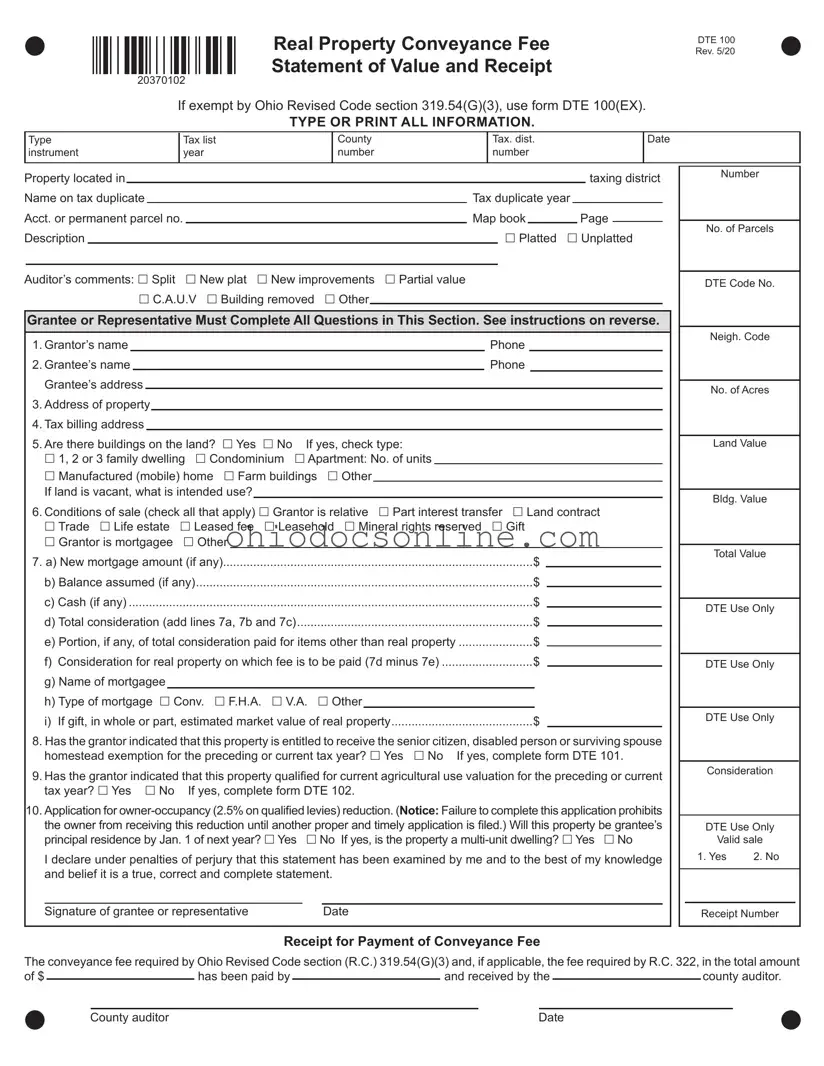Dte 100 Ohio Template in PDF
The DTE 100 Ohio form serves as the Real Property Conveyance Fee Statement of Value and Receipt, essential for documenting the transfer of real estate in Ohio. This form collects vital information about the property and the parties involved in the transaction, ensuring compliance with state regulations. Accurate completion of the DTE 100 is crucial, as it impacts property tax assessments and exemptions.
Open Editor
